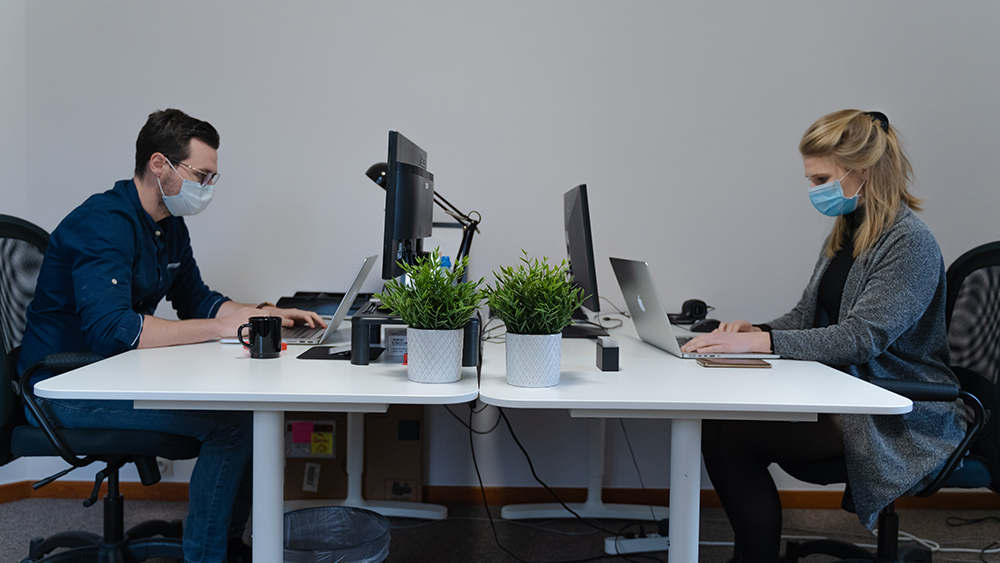For many people, the past year has been spent building makeshift home offices in bedroom closets, children’s toy rooms, or semi-clean corners of the family junk room.
Office meetings have been just as much about quieting background noise as they’ve been about getting work done. At the same time, many people have enjoyed the extra time in their day that went along with not sitting on a packed highway for hours commuting to the office.
But as the COVID-19 pandemic starts to subside, cities and offices are reopening. It’s as good a time as ever to consider how your office work space is serving your team. As we follow federal health guidelines for how to be in-person again, we can also consider what parts of the office are helpful for our productivity, or which ones could be upgraded, whether that’s flexibility in the floor plan or flexibility in scheduling.
Some people loved working remotely. Others loathed it. Some think a little of the office and a little of home life each week would make for a perfect combination. Check in with your team and see what their experience of remote versus in-person work has been. That can help you decide whether to have more flexibility in the way your office space is designed for in-person and remote workers.
Do you have conferencing places where people can both gather around a table to meet, but also call or video-conference into the meeting? What about hardware like laptops that are easier for your team to move around the office as well as to and from home? Consider what upgrades in office layout as well as office hardware might help serve these purposes.
As the Harvard Business Review reported, there’s a lot of collaboration and innovation that comes from having in-person places for people to gather as opposed to online-only connections. But there’s also great benefits to quality of life when people have more choices in how their day is structured.
That’s why something we can take away from our experiences working remotely for a year is the importance of giving people flexibility in their scheduling. Rather than looking at work as something that needs to be completed between 9 a.m. and 5 p.m. Monday through Friday, consider what projects need to be done, and how people can fit that in with other important life events, like attending their child’s basketball game, or bringing their parents to a doctor’s appointment in the middle of the day. The more understanding we can be, the happier and healthier our team can be.
As we regather once again in the office with our coworkers, check-in on guidelines from the Centers for Disease Control. The guidance will change just as the pandemic changes, so things that may be discouraged at one point in time, like a shared coffee pot, may be ok in a few months.
However, some guidance is helpful longterm, such as paying attention to how the office is ventilated, and considering how to better filter and keep the air clean. If it’s safe to do so, you can keep more windows open throughout the day, or install an air purifier.
It’s also a great time to encourage people who feel sick to stay home and rest. We all know the feeling of wanting to put on a good show for our boss and power through the work day while sniffling or coughing. But a silver lining of living through a pandemic has taught us that our health should come first, and that a few days spent at home recovering is better for everyone — even the business!
For questions about business insurance, contact a Sea Mountain Business Insurance Specialist.
